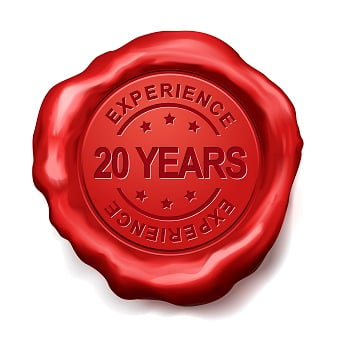The origin and history
Aromatherapy in ancient times
Although nobody exactly knows how or when our ancestors developed an interest in aromatic plants, some archaeological findings suggest an early use of these plants. During excavation of historical graves in Iraq remains of funeral wreaths were found.
In ancient civilisations, like Mesopotamia three to four thousand years ago, herbs and spices were used for treatment of illnesses. The healer purified the body and mind of the patient to get rid of bad spirits; the aromatic substances were used to cleanse the environment. They created a healing space around the illness to heal and restore balance. This ancient custom was persisted all around the world. In Peru, special healers were called curen eras (women) and curen eros (men) and used aromatic herbs like incense to cure diseases.
In ancient Egypt, there was no difference between a priest and a healer. During excavations of the healing temple Osiris in Abydos on the Nile, a few underground chambers were discovered which all had a hole in the ceiling. Inscriptions show that patients consulted the priests and spent the night in one of these chambers. Incense was burned above the patient and in the morning the dreams were interpreted by the priests who revealed the illness. Fragrance was the key to the subconscious of the patient.
In the early days, aromas were also a status symbol; kings, queens and other royals demonstrated their wealth by an excessive use of perfumes. Garlands of aromatic plants like myrtle and mint were used for banquets and the guests carried garlands with fragrant flowers and herbs to stimulate the digestion. In the ancient Egypt people wore perfume cones on their heads, which were impregnated with scents like frankincense. During the feast, these cones, slowly melting, released a sweet aroma. In the ancient Greece and Rome people used a different fragrance for each part of the body which resulted in a diffusing of fragrances when they moved oneself.
The Splendour of Egypt
When the tomb of Tutankhamun was exposed, every sarcophagus turned out to be covered by breath-taking garlands of aromatic flowers and herbs. Fortunately a botanic made pictures and identified the plants before they turned to dust. Amongst these flowers were lotus flowers, long time worshipped as a sacred flower, and lilies. Earthenware jars, filled with cream who contained frankincense, myrrh, nardus and cassia, still spread some scent after being kept for so long in the darkness.
For the Egyptians aromas were seen as a connection with the Gods. They were used as incense to burn on altars, as unguents for the Pharaoh during life and as embalming after death. Ingredients like cedar wood and frankincense were used to create perfumes and cosmetic products. A famous recipe of perfume with 16 ingredients, called “kyphi” was preserved and was known for reducing fears and understanding dreams. This old method of reducing fears with aromas is similar to the use of essential oils to improve one’s mood in aromatherapy.
Aromatherapy in different ancient cultures
Many cultures have old traditions in using aromas. They were used in medicine, for perfumes, cosmetics or other religious ceremonies. The same plant was often used for multiple applications – in India patchouli is used for treating skin problems, for the base of incense, for perfumes and moth repellent. India has aromatic traditions which have existed for over a thousand years. The exotic aroma of sandalwood is used for perfume ingredients, cosmetics and incense. It is burned during Hindu funerals to purify the mind of the deceased. Many divine sculptures are washed and rubbed with ointment with aromatic oils, covered with flowers and purified with incense. The traditional medicine of India, Ayurveda, makes extensive use of herbs, spices and essential oils like cardamom, to prevent infections and balance body and mind.
About four thousand years ago in China they used cinnamon powder and cassia for the preparation of incense. The Chinese tradition of herbal medicine is ancient and is based on a wide range of plants, like angelica root and camphor. A modern Chinese botanist has knowledge of hundreds of aromatic herbs and spices.
From the ancient Arabic culture many aromas were brought to Western Europe; merchants discovered routes to the East and spread plants like the orange tree and the rose, all around the world. The distillation is attributed to the Arabs, when heat is used to extract essential oil from aromatic material. Abu Ibn Sina, or Avicenna, a remarkable physicist, philosopher and scientist from the first century BC, created a simplified form of this technique. Now, two thousand years later, most of the essential oils are still produced by this same method.
Modern aromatherapy
In the 1930’s the French perfume chemist R.M. Gattefosse created the term ‘aromatherapy’ after he treated a burn wound with essential lavender oil. He was amazed by the fast healing and published a book about the healing powers of essential oils. Until then, the popularity of essential oils was very variable. In the 16th and 17th century, new distillery methods made the essential oils more available to a larger public. During the plague, spices like cloves were used to disinfect. In Western Europe, in the 17th and 18th century an increasing interest in chemical medicines resulted in a decline of medical use of herbs and essential oils. However, in the south of France, the perfume industry continued to distillate lavender and rose until the 19th century. A French report mentions that employers of the perfume industry have lower risk of tuberculosis but at that time nobody realised that the exposure to essential oils was the most important factor of protection. In the twentieth century in France the door to aromatherapy was opened for Gattefosse and other pioneers like Dr. Jean Valnet, a scientist who studied the antiseptic effect of essential oils and Marguerite Maury, who introduced the use of essential oils in massages. In Great Brittain the book of Robert Tisserens, The Art of Aromatherapy (1975) generated an interest in this topic, which led to a larger audience.
At this moment, aromatherapy is well known all over de world. It is very popular in English-speaking countries. There is a growing interest in the Far East and South-America and it is being applied increasingly in European countries, especially combined with beauty treatments. The style of the United States and Great Britain, is different from the aesthetic approach; in a professional treatment, three essential oils are selected and mixed with a vegetable oil and massaged into the skin of the entire body. The selection of the essential oils is determined by the physical and emotional state of the client, to make sure they can relax and get more energy.
Basket
My Account
Login
Forgotten your password?
No account?
With an account you can order faster and you have an overview of your previous orders.
Create an Account





